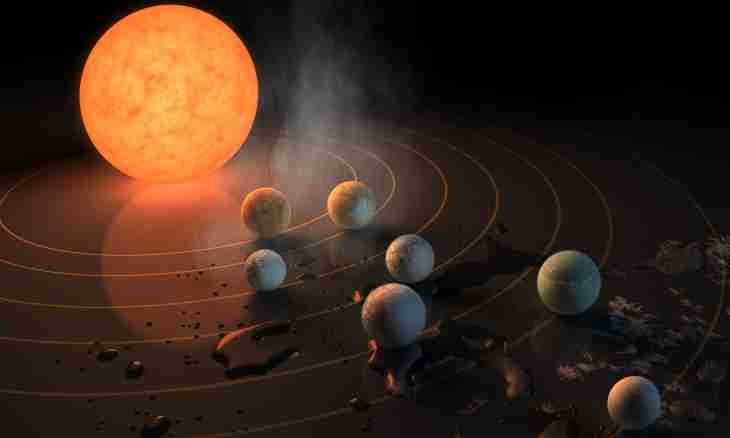Planets of the Solar system divide into two main groups — gas giants and planets of terrestrial group. The first consist of congestions of gases, planets of the second group have a firm surface.
Instruction
1. Gas giants call planets of yupiteriansky group, they are located from the Sun at a great distance. It is Saturn, the Neptune, Uranium and Jupiter, all of them have the huge sizes and weight, in particular Jupiter. Very fast rotation is characteristic of all giant planets round its pivot-center. At Jupiter the period of rotation is only 10 hours, Saturn has 11 hours. And the equatorial zones of planets rotate quicker, than polar. Because of it at gas giants the considerable compression at poles is observed. All planets of yupiteriansky group very low average density also have no firm surface, their visible surface is the dense hydrogen-helium atmosphere. Generally these planets consist of helium and hydrogen, however at their structure there are various impurity which give them characteristic coloring. The clouds consisting of ice crystals and solid ammonia give to Uranium a bluish shade, and chemical compounds of sulfur and phosphorus paint elements of the atmosphere of Jupiter in yellow and red-brown colors. Floodlight only from all planets of this group possesses strips parallel to the equator. It is considered that they were formed under the influence of its satellites. Under a thick layer of the atmosphere of this planet there is a layer of liquid molecular hydrogen, and below — a cover from metal hydrogen. In the center of Jupiter there is a small iron-silicate kernel. Saturn has approximately the same building. The Neptune, as well as Jupiter, radiates more heat, than receives from the Sun. It means that in its subsoil there is an additional power source. Deep blue color of this planet is explained by the fact that the methane molecules which are a part of its atmosphere actively absorb red beams. All gas giants have a large number of satellites: Saturn — 30, Uranium — 21, the Neptune — 8, and Jupiter — 28. The ring system of Jupiter consists of dust particles and is divided into three zones. Saturn possesses the amazing system of tracks, their width is about 400 thousand km, in thickness — several dozen meters. They consist of billions of small particles, each of which rotates around Saturn as the separate microscopic satellite.
2. It is much less planet of terrestrial group on the weight and the volume, than gas giants. It is Earth, Venus, Mars and Mercury, all of them have a firm surface, their orbits are disposed much closer to the Sun. The earth consists of silicates of iron, calcium and magnesium, about 2/3 of its surfaces are occupied by oceans. Mercury on the structure very much reminds Long, it is covered with craters too. Mercury very slowly turns round its pivot-center, because of it the party turned to the Sun, heats up to 430 °C, and opposite cools down up to -120 °C. The atmosphere of Venus almost completely consists of carbon dioxide, because of greenhouse effect this planet is called the hottest in the Solar system. Mars — the planet of terrestrial group, farthest from the Sun, red color give it iron oxides which are present at its surface much. The atmosphere of Mars consists of carbon dioxide, in many respects it reminds the atmosphere of Venus.

